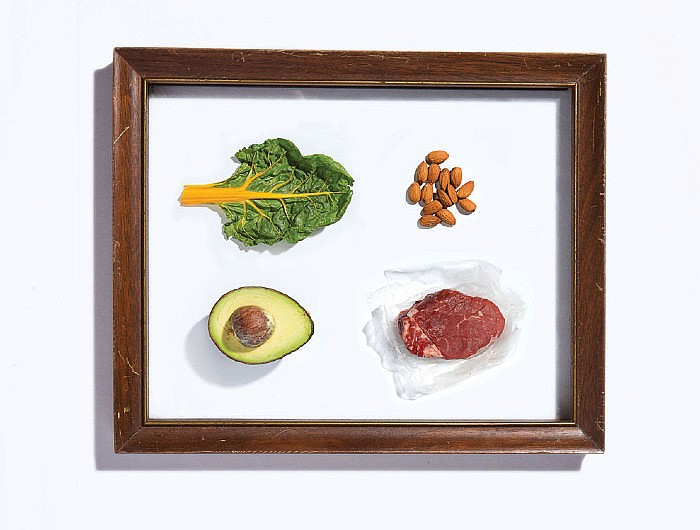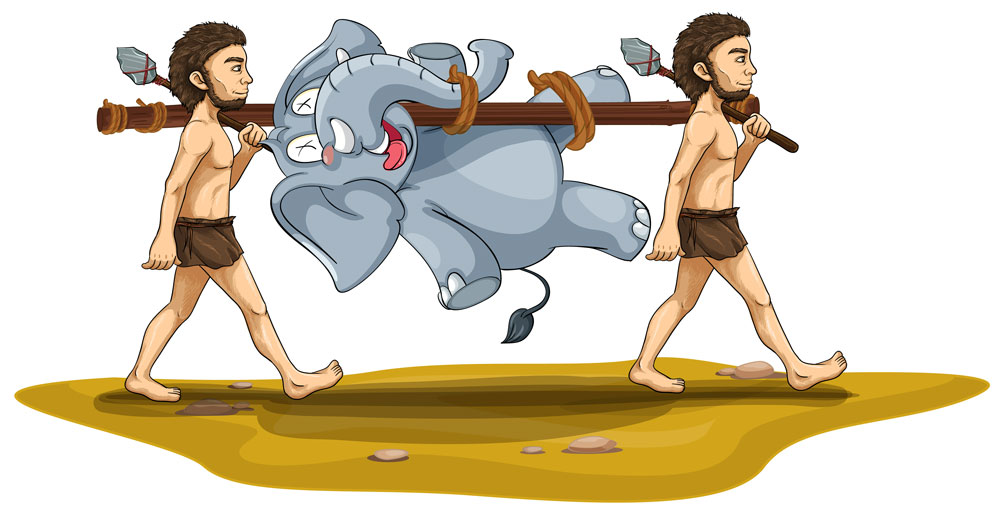6 Paleo Diet Tips For Present-Day Performance
Mimicking the diets of cavemen seems a bit counter intuitive. While most of us enjoy our meat and veggies foods our evolutionary ancestors thrived on giving up bread, pasta, beans, milk and cheese is a pretty radical shift. But many people have embraced the Paleo diet, which consists of proteins, fruits, vegetables, nuts and seeds, saying they look and feel healthier.
How is that possible? Chad O’Connor, who runs Naples-based healthy food pickup service Fresh Fit Foods, says the results people see on the Paleo diet are based on physiology. “Whenever you eat a piece of bread, your body breaks it down as a sugar,” he explains, “so when you limit grains in your diet, along with sugar and dairy, as the Paleo diet does, you never have spikes in blood sugar. When you don’t have spikes in blood sugar, you’re able to digest your food a lot better, and you have less inflammation.”
In addition to blood sugar spikes, grains (including wheat, rye, oats, barley, rice, millet and sorghum) can lead to a host of other problems. Gluten, a protein found in grains such as wheat and rye, often causes joint pain. As a self-defense measure, grains—even the gluten-free variety—have a protective layer of toxins that defend themselves from human or animal consumption and can wreak havoc on the gastrointestinal tract by damaging the gut lining. They’re also loaded in phytates, which leech minerals from the body.
In fact, O’Connor believes that many health problems are due to poor diets including grains, dairy and sugar. “What we see in our culture is that everyone’s eating breads and pasta and sugar, and everyone’s running rampant with diseases like diabetes and heart disease and hypertension,” he says, adding that changing one’s diet can help prevent some of these issues.
O’Connor isn’t the only one. The Paleo Physicians Network, an organization linking doctors who operate from an evolutionary perspective with potential patients, has 33 doctors in Florida alone.
New York Times bestselling author Robb Wolf, who wrote The Paleo Solution: The Original Human Diet, recommends that people try the Paleo Diet for 30 days and then slowly reintroduce other foods so they can see how they react to them. (Taking blood tests before and after can be helpful as well, but most people will see and feel a difference without them.) The effects are individual. For example, although dairy causes blood sugar spikes, some people can tolerate it better than others. Taking 30 days off and then reintroducing it will help you see what effect it has on you.
Ready to give it a try? Here are some steps that will make things easier.
Step 1: Focus on the Positive
In order to successfully transition to the Paleo diet—or even just try it on for size—it’s important to be aware of the abundance of food you can eat. “When you tell people they can’t eat bread or pasta or drink milk or eat dairy, they start thinking negatively in their head, ‘What can I eat then?’ and thinking they can’t eat anything at all, but it’s really the contrary,” O’Connor points out. You can eat any fruit or vegetable in existence. You can eat pretty much any form of protein. You can eat nuts and seeds.”
Instead of fixating on the spaghetti dinner you’re missing out on, focus on what you can eat—chicken soup, steak salad, eggs with sweet potato hash.
Step 2: Plan Ahead
Got a late meeting and only 10 minutes to figure out dinner? Instead of hopping to the nearest fast food restaurant, make sure you have some frozen veggies and seafood on hand, or pick up a rotisserie chicken and steam some broccoli. Planning meals ahead of time can be helpful, and preparing for those late nights by sticking some ingredients in a crockpot can be the difference between a delicious dinner and a whole lot of scrambling. And if you’re used to dining out more regularly, make sure to plan some extra time for dish duty!
Step 3: Eat Those Leftovers
The cost of strictly regimented meal plans can add up over time, so take advantage of your leftovers, heating them up for lunch or dinner the following day. Other ways to stay within your budget while eating Paleo include focusing on in-season vegetables, looking for sales for staples (such as extra virgin olive oil or coconut oil) and avoiding prepackaged meals. (Although a Paleo diet may lead to some sticker shock at the grocery store, the costs of eating out add up over time, so make sure you’re comparing what you spend on all your meals, not just groceries.)
Step 4: Beware the First Two Weeks
The Paleo diet retrains the body to burn fat instead of carbohydrates, but the transition isn’t always easy. “For the first couple of weeks, a lot of people complain that their energy levels are down, but once their body starts running off of their fat stores as opposed to the carbohydrates that they were used to feeding it, they actually feel a lot better and have a lot more energy, and they’re able to sustain higher levels of energy for longer,” O’Connor says.
Eating starchy carbs such as sweet potatoes or yams can help ease the transition, but knowing that it’s temporary can help you through it when things get rough. “Get through the first couple of weeks, and it’s pretty clear sailing after that,” he says.
Step 5: Expect Results
When trying to lose weight, hitting the gym or going for a run or a bike ride is often a first approach. But as the old adage goes, you can’t out-train a bad diet. Combining a Paleo diet with a smart exercise program is your best bet.
“To have someone say you look different or your stomach looks flatter or ask if you’ve been working out harder, and you’re trying to review in your mind all of the things that you’ve changed, it definitely comes back to nutrition,” says Nicole Walker of Naples, WHO??. “In my opinion, nutrition is more important than working out. They complement each other, but without good nutrition, there’s no way that you’re feeding your body the nutrients it actually needs to perform at peak level.”
Body composition changes and improved recovery in the gym are just a few of the improvements those on the Paleo diet experience. Walker recalls losing the feeling of being bloated after a meal, better sleep and being in a better mood in general. Others noticed improved recovery between workouts.
Keeping track of the changes you see in your mood, sleep, recovery, energy levels, body composition and performance is important. It’ll help you remember why you’ve decided to give up Froot Loops and pizza and keep you going strong in the face of temporary cravings.
Step 6: Let Go of Perfectionism
Beyond the first 30 days on a strictly Paleo diet—which is a bit like hitting the reset button—expecting yourself to be 100 percent Paleo at all times is not realistic. Knowing how your body reacts to other foods is crucial, so you can make an informed decision about when to indulge and in what. A great way to limit cheat meals (ideally to just two or three a week) is to make sure they are truly memorable. Will you remember them in a week or two weeks, or are you just mindlessly snacking? Not every snack has to be a Paleo snack, but make sure your cheat meals count.
“Paleo” (or “Foods to Eat”)
Meat, fish, eggs, fruits, vegetables, nuts
Not Paleo
Bread, pasta, rice, beans, milk, cheese, yogurt, healthy oils, seeds


